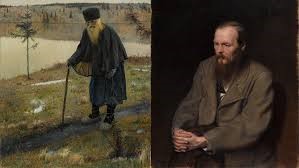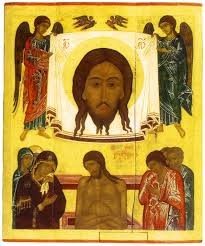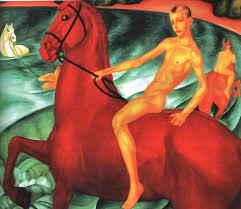The diplomacy of beauty
An exceptional exhibition of paintings opens in the Vatican, 54 of the most famous works of Russian art. Another step forward - after the meeting between Pope Francis and Patriarch Kirill - towards a new friendship between the two Churches.
Rome (AsiaNews) - An exceptional exhibition of Russian paintings (Pilgrimage of Russian Art from the Dionysius to Malevich) opened today November 20 at the Vatican, in the Braccio di Carlo Magno of the Vatican Museums, which directly accesses St Peter’s Square. There are 54 works among the most famous of Russian art, which will remain available to visitors until February 16, 2019. The exhibition is the Russian response to the 2016 initiative, when the Vatican Museums brought paintings of extraordinary value to Moscow 42 (Rome Aeterna: the masterpieces of the Vatican Pinacoteca Bellini, Raffaello, Caravaggio).
The Moscow exhibition had an overwhelming success with the public, and the exhibition of the paintings of the Tretjakov Gallery in Rome deserves as much attention. The artistic and cultural meaning is absolutely evident: in addition to a selection of ancient icons, you can admire some of the most famous paintings of Russian culture of the nineteenth and early twentieth century, by authors such as Kramskoj, Perov, Ge, Nesterov, Vrubel ', Petrov-Vodkin, Kandinskij, ending with the famous Black Square by Malevich, the work that in 1915 inaugurated the entire abstract current of contemporary art.
Nor can one elude the historical and diplomatic significance of the exhibition itself, which is part of a long series of initiatives in recent years. The Vatican exhibition in Moscow, in the fall of 2016, was the first sign of the "thaw" between Rome and Moscow, after the historic February embrace of the same year between Pope Francis and Patriarch Kirill at the airport of Havana and the previous one visit of Putin to the Vatican.
The second major event, the following year, was the pilgrimage of the relic of St. Nicholas of Bari, which gathered huge crowds of Russian pilgrims in a rediscovery of common Christian roots. Since then, meetings, conferences, exhibitions and cultural exchanges have been taking place at all levels: academic, devotional, ecclesiastical and popular, especially humanitarian and charitable, to indicate the possible path of Christian unity and unity of peoples.
The Patriarchate of Moscow, in particular, intends to affirm the principle that the ecumenism of the third millennium should not seek dogmatic understandings or formal unions between the local Churches, but recognize the dignity and importance of each of them through the rediscovery of history and culture. This criterion was enthusiastically accepted by the Holy See, which puts its best forces into action in the many initiatives.
On the contrary, the friendship of spirit and art has been blatantly contradicted in recent weeks by the total crisis that has led to the division between Moscow and Constantinople on the question of the autonomy of the Church in Kiev. The neighbors seem to no longer understand each other, just as the distant ones are drawing closer: the geography of universal Christianity is profoundly changing, and to date the Church closest to the Russian Orthodox seems to be the Roman Catholic.
In fact the exhibition in the Charlemagne wing can provide some explanations to this strange phenomenon, highlighting the very special cultural roots of Russian spirituality. It is in fact a combination of the Byzantine style of the ancient icons, to which the Russians know how to give an expressive force unknown to the Greeks, and the all-Western genius of modern Russian painters, who find their spiritual roots in new forms of the "oriental" heritage.
The curators of the exhibition, among the most authoritative art historians of Russia, have made particularly significant choices, flanking the "Trinity" of Paisij and the "Trojka" of Perov, the icons of Baptism and of the Transfiguration with the apparitions of "Christ to the people "of Ivanov (the painting, painted in Rome, was called by Tsar Nicholas I the" manifesto of the Russian soul "), the" Red Horse "of Petrov-Vodkin with the horse of St. George the martyr and other ideas, the most striking is the combination of a great icon of the Last Judgment and the "Black Square" of Malevich, where the disappearance of all form suggests the unattainable depth of the divine.
Russia is a union of East and West, and causes both worlds to rediscover their true identity: beyond the conflicts and contradictions of history, in the genius of artists we can see the path of a new beginning of the Christian world, a new hope for all humanity.
19/12/2018 10:28










.png)










